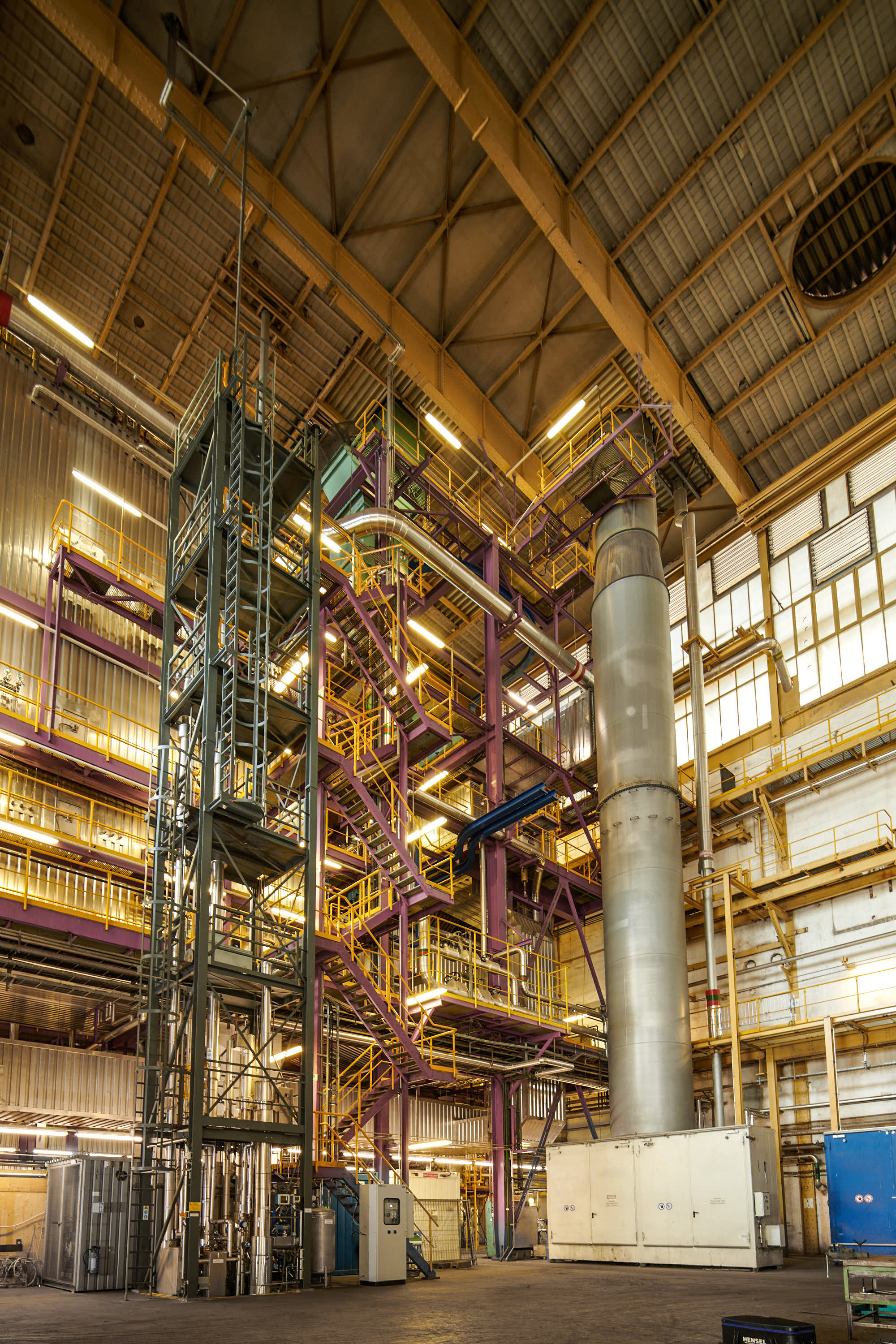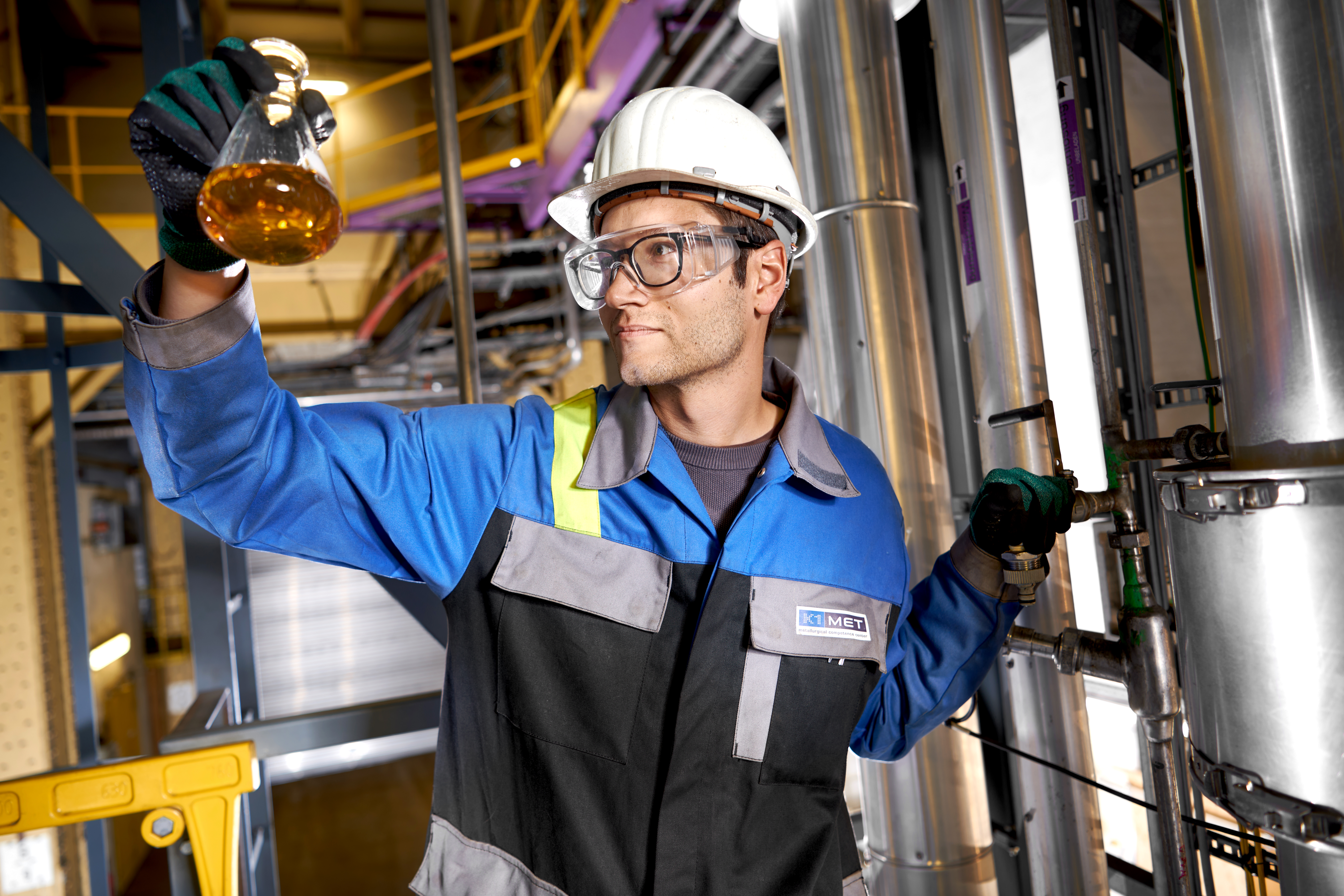Introduction
Within this project a closed carbon cycle with carbon capture and utilization technology is demonstrated in industrial environment (refractory, steel, and chemical industry). The project will reduce CO2 emissions by developing and applying innovative catalytic (methanation) and bioelectrochemical (hydrocarbons) CO2 conversion technologies. Within an integrated steel mill, a refractory and chemical industry, methane (CH4) can serve not only as energy carrier, but also as reducing agent, and thus increase the potential of CO2 reduction due to a less demand on fossil sources such as coal and natural gas.
An amine scrubber plant will be used to separate and purify up to 800 kg/day of CO2 to feed the downstream catalytic methanation plant.
The catalytic methanation process at pilot plant size will be tested in industrial environment for the first time. The process will be designed to convert captured CO2 (or almost untreated off-gases) and renewable hydrogen to synthetic CH4 in a scale of 300 kg CH4 /day.
Captured CO2 will also be used to optimize the bio-electrochemical CO2 conversion to acetate or longer-chain hydrocarbons. In the K1-MET laboratory, pure flue gas/CO2 and mixed culture microorganisms will be used to optimize the microbial electrosynthesis process.
Objectives and Motivation
- Identifying the optimal operating conditions of the amine scrubber, using real industrial off gas from the steel or chemical industry
- Experiments and real-life operation to determine the effect of off gas impurities/species on the CO2 separation efficiency and the required product gas composition for the downstream methanation plant
- Investigation of the stability of the solvent as well as degradation/ageing tendency
- Analysis of the CO2 lean off-gas with respect to degradation products (e.g., ammonia based substances)
- Investigation of counter measures based on the analysis (e.g., a scrubbing, fixed bed ad- or absorption etc.).
- Implementation of investigations with focus on the effects of important process parameters (e.g., pressure, temperature, gas hourly space velocity GHSV) on the product yields and the long-term process stability.
- Creation and testing of improved ceramic honeycomb catalysts with increased performance to achieve positive impact on the process economy
Methodology
- Fed of the amine-scrubber plant with real off gas (60-100 Nm³/h) from the steel plant or the close ammonia production plant LAT Nitrogen.
- continuously operation of the plant to vary and investigate important process parameters (e.g., volume flow of inlet flue gas, type of liquid solvent, heat, and cooling duties, recycle rates)
- Installation of a solvent treatment unit to recover the solvent, remove heat stable salts and thus, decrease the consumption rate of solvent make-up, which has an important influence on the economic efficiency of the plant.
- Directly connection of the separated CO2 to the catalytic methanation plant
- Utilization of a two-stage catalytic methanation in cooled tube bundle fixed bed reactors for the conversion of pure and diluted CO2 and green H2 to CH4 in pilot scale.
- Setup of bioelectrochemical reactors in the form of H-cells and inoculation of the cathode chambers with pure or mixed cultures
- Monitoring and Comparison of CO2 conversion into value added compounds like acetate
- Testing of microbial electrosynthesis will be tested with pure CO2 as well as CO2 rich exhaust gas from energy intensive industry.
Results and Application
The experimental phase will result in KPIs on energy efficiency of different solvents, emission levels, limit concentration of impurities in recycled CO2, solvent make-up rates and recovery.
A proof of concept for diluted and concentrated CO2-methanation under real-life industrial conditions should be established. Improved ceramic honeycomb catalysts for load-flexible operation should be available and transfer of the technology from laboratory to pilot scale shall be performed.
Microbial electrosynthesis of pure CO2 to acetate or longer-chain hydrocarbons within lab scale reactors (inoculated with pure or mixed cultures) is developed and optimized. Bioelectrochemical CO2 conversion to acetate of CO2 rich exhaust gas from energy intensive industry is tested and production rates are evaluated.

 DE
DE EN
EN
